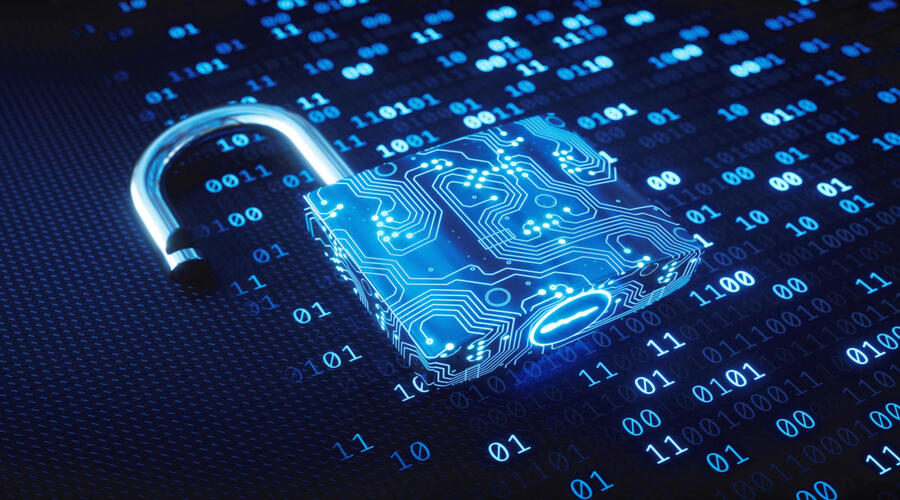The blockchain technology has revolutionized the way we think about digital assets and transactions. With the rise of Web 3.0, decentralized applications (DApps) and smart contracts have become increasingly popular, leading to the emergence of various token standards. These token standards play a crucial role in defining the functionality, interoperability, and security of digital tokens within the blockchain ecosystem. In this article, we will explore the most prominent token standards, focusing on ERC-20, ERC-721, and beyond.
Introduction
As the use of blockchain technology expands, the need for standardized tokens becomes evident. Token standards provide a set of rules and guidelines that enable seamless interaction between different applications, wallets, and exchanges. They ensure compatibility, fungibility, and security, allowing developers to create and manage digital assets with ease.
Understanding Token Standards

1. What are Token Standards?
Token standards are a set of specifications and protocols that define how tokens function within a blockchain network. They determine the token’s structure, behavior, and functionality. These standards ensure that tokens adhere to a common set of rules, enabling them to be recognized and utilized across various platforms.
2. ERC-20: The Most Popular Token Standard
One of the most widely adopted token standards is ERC-20 (Ethereum Request for Comment 20). ERC-20 defines a common set of rules for fungible tokens, which are interchangeable and identical to one another. This standard has played a significant role in enabling the creation and widespread use of cryptocurrencies, initial coin offerings (ICOs), and decentralized exchanges (DEXs).
ERC-20 tokens are characterized by their divisibility and transferability. They can be easily managed and traded on the Ethereum blockchain, making them highly liquid and accessible. This standard has fostered the development of countless decentralized applications and has revolutionized fundraising for blockchain projects.
3. ERC-721: Non-Fungible Tokens (NFTs)
While ERC-20 tokens focus on fungibility, ERC-721 introduces the concept of non-fungible tokens (NFTs). Unlike ERC-20 tokens, NFTs are unique and indivisible. Each token represents a distinct asset or item, such as digital art, collectibles, or virtual real estate.
ERC-721 has opened up new possibilities for creators and collectors in the digital space. NFTs have gained widespread attention for their ability to prove ownership and authenticity of digital assets, leading to a surge in interest and market growth. They have unlocked new avenues for creators to monetize their work and have given rise to innovative applications and marketplaces.
Security Considerations in Token Standards
Security is a paramount concern when it comes to token standards. Ensuring the integrity and safety of digital assets is essential to maintain trust and prevent malicious activities. Let’s explore some common security vulnerabilities and best practices for secure token development.
1. Common Security Vulnerabilities
Token standards are not immune to security vulnerabilities. Some common issues include reentrancy attacks, unchecked return values, and inadequate access control. These vulnerabilities can result in the loss or manipulation of funds, compromising the entire token ecosystem. It is crucial for developers to be aware of these risks and take necessary precautions to mitigate them.
2. Best Practices for Secure Token Development
To enhance the security of token standards, developers should follow best practices such as conducting thorough code audits, implementing multi-signature wallets, and utilizing standardized security libraries. Smart contract audits by reputable third-party firms can help identify potential vulnerabilities and ensure robust security measures are in place.
Beyond ERC-20 and ERC-721
While ERC-20 and ERC-721 have made significant contributions to the blockchain ecosystem, developers continue to explore and innovate with new token standards. One such standard is ERC-1155, which combines the features of both fungible and non-fungible tokens. ERC-1155 allows for the creation of “multi-class” tokens, which can represent various assets and be managed more efficiently.
Additionally, other token standards are emerging in the Web 3 landscape, each with its unique characteristics and use cases. These include standards like ERC-777, ERC-223, and Binance Smart Chain’s BEP-20. As the blockchain industry evolves, it is essential to stay updated with the latest token standards and their implications.
Beyond ERC-20 and ERC-721
While ERC-20 and ERC-721 have gained significant traction in the blockchain industry, developers and innovators are continuously exploring new token standards to address specific use cases and improve upon existing functionalities. Here are a few noteworthy token standards beyond ERC-20 and ERC-721:
1. ERC-777: Advanced Token Standard
ERC-777 introduces more advanced features compared to ERC-20. It includes capabilities such as “hooks” and “operator overloading,” enabling tokens to execute specific actions when transferred, received, or held. This standard provides enhanced flexibility and control for token holders and developers, enabling more sophisticated token interactions within decentralized applications.
2. ERC-223: Enhanced Security and Efficiency
ERC-223 addresses some of the security issues present in ERC-20, particularly the problem of tokens getting lost when mistakenly sent to smart contracts that do not support token handling. By introducing a “tokenFallback” function, ERC-223 ensures that tokens sent to incompatible contracts are not lost but instead returned to the sender. This standard improves the security and efficiency of token transfers within the Ethereum ecosystem.
3. BEP-20: Binance Smart Chain Token Standard
BEP-20 is the token standard specifically designed for the Binance Smart Chain (BSC), a blockchain platform created by the popular cryptocurrency exchange, Binance. Similar to ERC-20, BEP-20 tokens are fungible and can be utilized within the BSC ecosystem. As Binance Smart Chain gains popularity, more projects are opting to create tokens based on the BEP-20 standard due to its compatibility and integration with the Binance ecosystem.
4. TRC-721: Token Standard for TRON
TRC-721 is the token standard developed for the TRON blockchain. It offers functionalities similar to ERC-721, enabling the creation and management of non-fungible tokens on the TRON network. TRC-721 has gained attention for its potential in various applications, including gaming, digital collectibles, and decentralized finance (DeFi) on the TRON platform.
Beyond ERC-20 and ERC-721
While ERC-20 and ERC-721 have gained significant traction in the blockchain industry, developers and innovators are continuously exploring new token standards to address specific use cases and improve upon existing functionalities. Here are a few noteworthy token standards beyond ERC-20 and ERC-721:
1. ERC-1155: Multi-Asset Token Standard
ERC-1155 is a token standard that introduces a unique approach to tokenization by combining both fungible and non-fungible tokens within a single smart contract. This standard allows developers to create tokens that can represent multiple assets, enabling efficient management and reducing the cost of deployment. ERC-1155 has gained popularity in the gaming industry, where it enables the creation of in-game items and virtual collectibles.
2. ERC-777: Advanced Token Standard
ERC-777 is an advanced token standard that extends the functionality of ERC-20 tokens. It introduces new features such as hooks, allowing tokens to perform additional actions during transfers, and operators, enabling approved third-party contracts to act on behalf of token holders. These enhancements provide greater flexibility and control over token operations, facilitating more sophisticated token interactions and enabling complex decentralized applications.
3. TRC-20: Token Standard for TRON
TRC-20 is the token standard developed for the TRON blockchain. Similar to ERC-20, TRC-20 tokens are fungible and can be utilized within the TRON ecosystem. TRC-20 has gained popularity due to the growing adoption of the TRON blockchain in various industries, including gaming, content sharing, and decentralized finance (DeFi). The TRON ecosystem provides developers with tools and resources to create and deploy TRC-20 tokens, fostering innovation and enabling new use cases.
4. NEP-11: Token Standard for NEO
NEP-11 is the token standard designed for the NEO blockchain platform. NEP-11 tokens are compatible with the NEO ecosystem and can be utilized within NEO-based decentralized applications. This standard provides a framework for creating and managing tokens on the NEO blockchain, fostering tokenization and enabling the development of diverse applications such as digital assets, supply chain management, and decentralized exchanges.
The Impact of Tokenization on Supply Chain Management
Tokenization has the potential to revolutionize supply chain management by introducing transparency, traceability, and efficiency. By tokenizing physical assets and goods, each item can be assigned a unique digital representation on the blockchain. This enables real-time tracking, verification of authenticity, and monitoring of the item’s journey from production to delivery. Tokenization also streamlines processes such as inventory management, quality control, and dispute resolution. With increased visibility and trust within the supply chain, businesses can mitigate risks, reduce costs, and enhance overall supply chain efficiency.
The Tokenization of Intellectual Property and Creative Assets
Tokenization offers a new paradigm for the monetization and ownership of intellectual property and creative assets. Through the issuance of non-fungible tokens (NFTs), artists, musicians, writers, and other creators can tokenize their work and sell it directly to collectors, fans, or investors. NFTs enable provenance and authenticity verification, ensuring that each digital asset is unique and scarce. This opens up possibilities for creators to receive fair compensation for their work, bypassing traditional intermediaries. Furthermore, NFTs can enable ongoing royalties, ensuring that creators continue to benefit from the appreciation and usage of their digital assets.
Conclusion
Token standards play a critical role in defining the functionality and security of digital assets within the blockchain ecosystem. ERC-20 and ERC-721 have been instrumental in enabling the creation and utilization of fungible and non-fungible tokens, respectively. However, security remains a primary concern, and developers must adhere to best practices to mitigate vulnerabilities.
As the blockchain industry continues to evolve, new token standards like ERC-1155 and others will further expand the possibilities of digital asset representation. Understanding these standards and their security implications is essential for developers, users, and businesses aiming to leverage the benefits of Web 3.
Pranav is a tech, crypto & blockchain writer based in London. He has been following the development of blockchain technology for several years.

